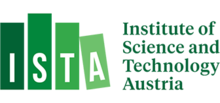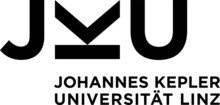ESQ PostDoc
Sicong Ji

One dimensional physics under artificial gauge fields
We propose to build a quantum simulator of the Pokrovsky-Talapov model by combining a one-dimensional (1D) Sine-Gordon model with an artificial gauge field. The experimental proposal is based on the Raman assisted tunneling between a pair of one-dimensional Bose gases on the ‘AtomChip’. It opens a new avenue for directly detecting the commensurate-incommensurate phase transition in a cold atom system. By reviving the tunneling between a tilted double-well, we can imprint an extra position dependent phase on the atoms during the Raman process and this will induce a gauge field between the two atom clouds. By tuning the angle between the Raman beams, we can change the strength of this gauge field so as to tune the misfit term in a C-IC phase transition. By reading out the soliton structure in the relative phase between the clouds, we can draw the C-IC phase diagram in both zero and finite temperature case. Finally, by suddenly changing the misterm, the system provide the possibility to observe the dynamical features arising from the topological quench.
The host group, headed by Prof. Jörg Schmiedmayer, is among the world leaders in manipulation, measurement and simulation of neutral atoms by AtomChip. They have accumulated a wealth of experience on one-dimensional physics which gives great support for this project. The laboratory in Atomninstitut (ATI) of TU-Wien, is specifically designed for studying quantum phenomena. The extremely stable temperature and humidity standard guarantees smooth and effective experiments.
With the support from ESQ, I have a lot of opportunities to communicate and work together with other leading groups all around the world in the field, which play crucial roles not in this project, but also for establishing my scientific network of contacts. The cooperation with Prof. E. Demler group at Harvard on the mesoscopic analyses on Pokrovsky-Talapov model and Prof. V. Gritsev group at Amsterdam on the quench dynamic of a topological current quench give the project a solid theoretical basis. And the discussion with Prof. O. Romero-Isart from University of Innsbruck about the coherence inflation in the cold atom system opens a new direction of my project.
ÖAW holds the SFB meeting 4 times one year, which gives an ideal platform to represent the new results and disseminate our research. With the travel funding from ESQ, I am free to attend the top international conferences in quantum and atomic physics and keep in touch with the cutting edge researches in the world. These experiences will greatly broad my science views as well as improve my communication skill.
After his ESQ Fellowship, Sicong Ji has stayed on as a Postdoc in Jörg Schmiedmayer's group.
Navigation
Contact
ESQ Office
Austrian Academy of Sciences (ÖAW)
Atena Zalbeik-Dormayer
Boltzmanngasse 5
1090 Vienna
office(at)esq-quantum.at





